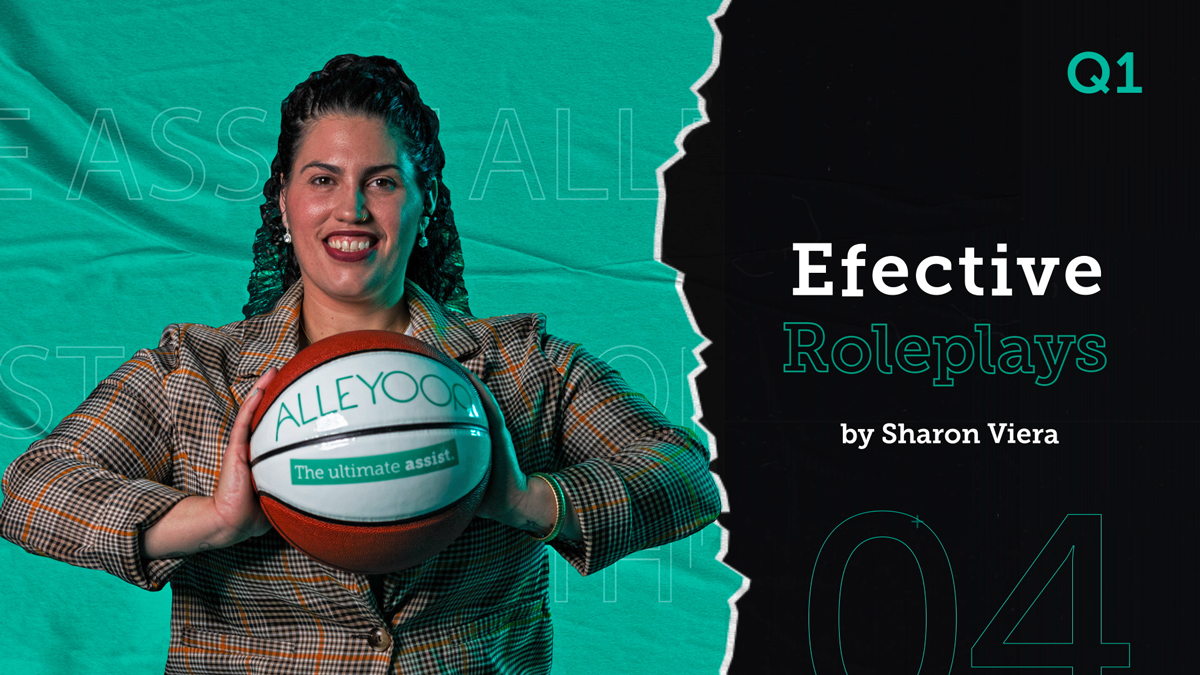Introduction
Sharon Viera is a Business Development Manager at Alleyoop. Having started out as an SDR, Sharon knows the struggles of getting into a rhythm and consistently getting sets. Now that she is leading a team of about a dozen SDRs, she takes seriously her responsibility to help her team find their rhythm. A big part of getting them there is consistent and effective roleplays.
In the included video you can hear Sharon talk about her formative experiences as an SDR and the difference continual and comprehensive roleplays made in her journey.
Getting Started
When anyone starts as an SDR you’re given the basic tools you need to succeed – a script, some objection handles, and your tech. As an eager new rep, you’re excited to get into your lists, make your dials, and hopefully get some sets! But what do you do when things are clicking quite the way you hoped?
If you’re lucky, you have a great AE like Sharon, who is ready to help you reach the numbers you’re looking for. “I would get maybe 1 meeting a week and was left frustrated all the other days a week I didn’t book anything. It was after a couple of months that my AE realized he had to take me and my teammates under his wing to provide quick and effective role plays every single day of the week.”

What Makes an Effective Roleplay?
Deciding you’re going to roleplay more often in order to improve your results is great! But what’s more important is the quality of your roleplays. Here are some ways you can ensure you’re getting the most out of this exercise:
1. Roleplay Often
Make sure you’re doing roleplays at least three times a week. The consistency alone will help you stay sharp.
2. Roleplay Realistically
The scenarios you roleplay need to be hyper-realistic and they need to vary each day. In the real world of calling, you will never have the same conversation twice. Your roleplays need to prepare you to handle different versions of the same objections, different attitudes and tones from prospects, and different outcomes of calls.
3. Roleplay Thoroughly
Focus on each part of the call the same way a basketball player focuses on each part of their game. If you were to sit in on an NBA practice you would not see them running full-court press, five-on-five games for the entire practice. They’d break things down – shooting drills, set plays, defensive drills, free throws, etc. Treat your roleplays the same way! Focus on your opener, then your value proposition, each objection, and the lockdown individually before you put together a full call.
4. Roleplay Completely
As Sharon says, “Most people make the mistake of ending role plays once the prospect says yes to the meeting, but the end is just as, if not more important than the start. If the prospect remembers nothing else about the whole pitch, they WILL remember the last minute of the conversation…”
Major Results
When Sharon started roleplaying with her AE using these four main criteria she saw a monumental shift in her results. She went from booking maybe one meeting per week to one to three quality meetings per day!

Conclusion
The run-of-the-mill roleplay is all well and good but for the exercise to truly impact your performance as an SDR you need to optimize your efforts. Roleplay often, realistically, thoroughly, and completely in order to be sure you are prepared for any situation a real-world call may throw your way.
Post Written By:
Becca Fields-Poniskaitis
Head of Marketing
Video Script Written & Recorded By:
Sharon Viera
Business Development Manager

